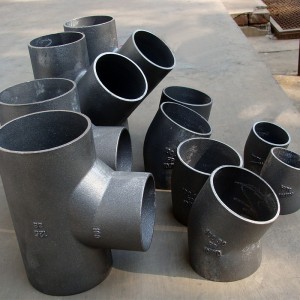- Afrikaans
- Albanian
- Amharic
- Arabic
- Armenian
- Azerbaijani
- Basque
- Belarusian
- Bengali
- Bosnian
- Bulgarian
- Catalan
- Cebuano
- China
- China (Taiwan)
- Corsican
- Croatian
- Czech
- Danish
- Dutch
- English
- Esperanto
- Estonian
- Finnish
- French
- Frisian
- Galician
- Georgian
- German
- Greek
- Gujarati
- Haitian Creole
- hausa
- hawaiian
- Hebrew
- Hindi
- Miao
- Hungarian
- Icelandic
- igbo
- Indonesian
- irish
- Italian
- Japanese
- Javanese
- Kannada
- kazakh
- Khmer
- Rwandese
- Korean
- Kurdish
- Kyrgyz
- Lao
- Latin
- Latvian
- Lithuanian
- Luxembourgish
- Macedonian
- Malgashi
- Malay
- Malayalam
- Maltese
- Maori
- Marathi
- Mongolian
- Myanmar
- Nepali
- Norwegian
- Norwegian
- Occitan
- Pashto
- Persian
- Polish
- Portuguese
- Punjabi
- Romanian
- Russian
- Samoan
- Scottish Gaelic
- Serbian
- Sesotho
- Shona
- Sindhi
- Sinhala
- Slovak
- Slovenian
- Somali
- Spanish
- Sundanese
- Swahili
- Swedish
- Tagalog
- Tajik
- Tamil
- Tatar
- Telugu
- Thai
- Turkish
- Turkmen
- Ukrainian
- Urdu
- Uighur
- Uzbek
- Vietnamese
- Welsh
- Bantu
- Yiddish
- Yoruba
- Zulu
Dec . 07, 2024 17:04 Back to list
aluminum permanent mold castings
Aluminum Permanent Mold Castings A Comprehensive Overview
Aluminum permanent mold casting is a sophisticated manufacturing process widely used in the production of high-quality aluminum components. This technique combines the benefits of both sand casting and die casting while eliminating some of their drawbacks, making it an ideal choice for various industries, including automotive, aerospace, and consumer goods.
What is Permanent Mold Casting?
Permanent mold casting is a method in which molten metal is poured into reusable molds made from metal, typically iron or steel. The process of aluminum permanent mold casting involves pouring molten aluminum into these molds, which allow for precise shaping and smooth surface finishes. Unlike sand casting, where molds are made from sand and are used only once, permanent molds can endure multiple casting cycles, making them a more cost-effective solution for medium to high-volume production runs.
Advantages of Aluminum Permanent Mold Castings
1. Dimensional Accuracy Permanent molds provide greater dimensional accuracy compared to sand molds. This precision reduces the need for extensive machining and finishing operations after casting, leading to shorter production times and lower overall costs.
2. Enhanced Surface Finish The smooth surface of permanent molds results in castings with superior surface finishes. This is particularly important in industries where aesthetics and surface quality are paramount, such as consumer electronics and automotive parts.
3. Strength and Durability Aluminum permanent mold castings have excellent mechanical properties. The slower cooling rate of aluminum in permanent molds allows for the development of a fine-grained structure, leading to superior strength and durability compared to sand-cast aluminum.
4. Reusability The reusable nature of permanent molds significantly reduces the waste associated with production. This not only contributes to environmental sustainability but also lowers material costs over time.
5. Lower Defect Rates With better control over the casting process and the ability to regulate cooling rates, the defect rates in aluminum permanent mold castings are typically lower than those in sand or die-cast processes.
Applications of Aluminum Permanent Mold Castings
aluminum permanent mold castings

Aluminum permanent mold castings are utilized in a wide array of applications. Some common uses include
- Automotive Components Parts such as engine blocks, cylinder heads, and transmission cases often employ this casting method due to its strength and lightweight properties. - Aerospace Parts Given their need for high performance at low weight, aerospace components benefit from the precision and quality of aluminum permanent mold castings. - Consumer Products Items like kitchen appliances, electronic housings, and decorative fixtures often utilize this casting method as it allows for intricate designs and high-quality finishes.
The Casting Process
The process of aluminum permanent mold casting typically involves several key steps
1. Mold Preparation The molds must be preheated and coated to prevent sticking and improve surface finish.
2. Melting Aluminum Aluminum alloys are melted in a furnace, reaching temperatures between 1300°F to 1500°F (704°C to 815°C).
3. Pouring The molten aluminum is poured into the prepared molds. Careful pouring techniques help minimize turbulence and defects.
4. Cooling The molds, being metal, cool the aluminum more quickly than sand molds, leading to enhanced mechanical properties.
5. Finishing After the casting has cooled and solidified, it is removed from the mold and may undergo further machining, treatment, or finishing processes depending on the requirements.
Conclusion
Aluminum permanent mold castings represent a remarkable blend of efficiency, quality, and versatility in manufacturing practices. As industries continue to seek ways to improve production processes while maintaining high standards for quality and performance, aluminum permanent mold casting stands out as a superior choice. Its advantages in terms of strength, dimensional accuracy, and surface quality make it a preferred method for producing complex shapes and components across various sectors. As technology advances, the applications and capabilities of aluminum permanent mold casting are likely to expand even further, solidifying its place in modern manufacturing.
-
Premium Cast Iron Water Main Pipe: Durable, Corrosion-Resistant
NewsAug.03,2025
-
Durable Cast Iron Water Mains | AI-Optimized Systems
NewsAug.02,2025
-
High-Efficiency Propane Boiler for Baseboard Heat | Save Energy
NewsAug.01,2025
-
Premium Source Suppliers for Various Gray Iron Castings
NewsJul.31,2025
-
Durable Cast Iron Water Main Pipes | Long-Lasting
NewsJul.31,2025
-
High-Quality Cast Iron Water Main Pipe for Durable Infrastructure
NewsJul.30,2025


